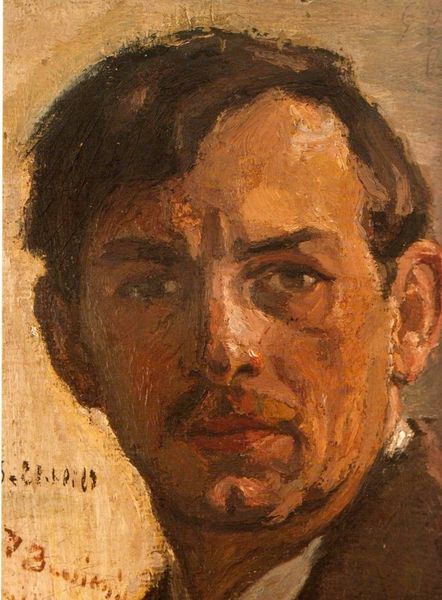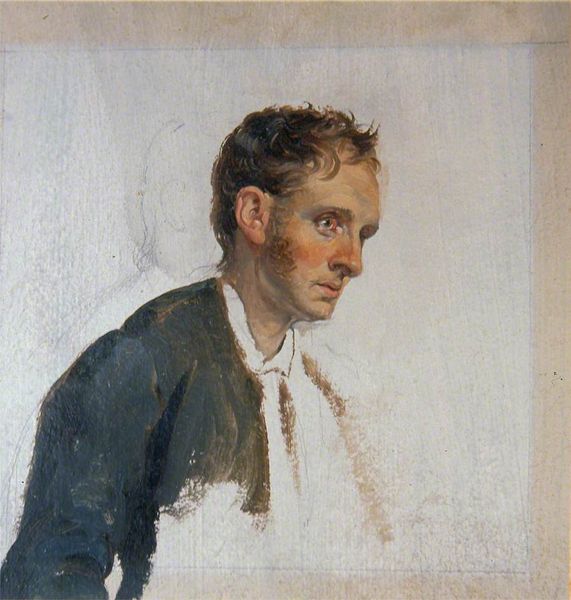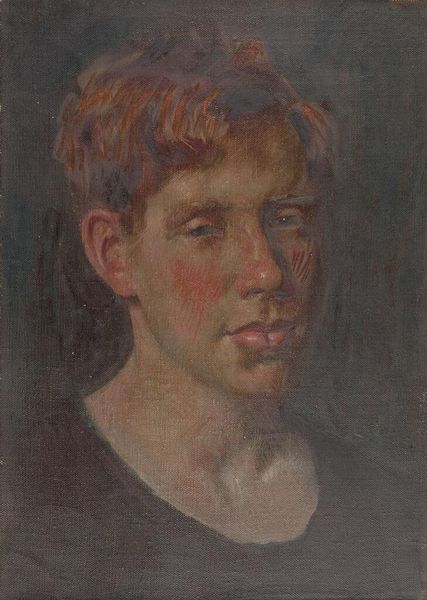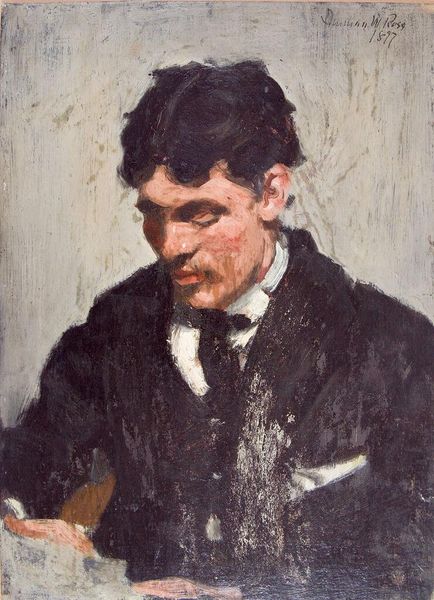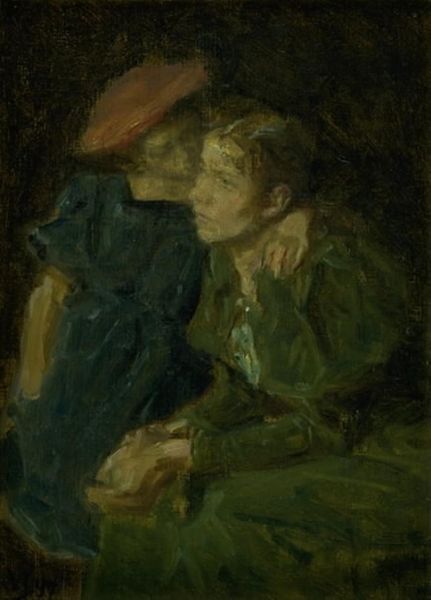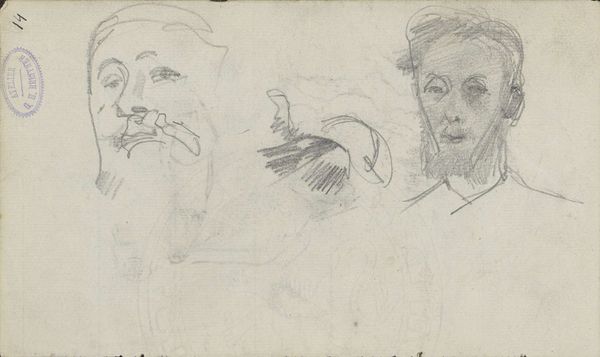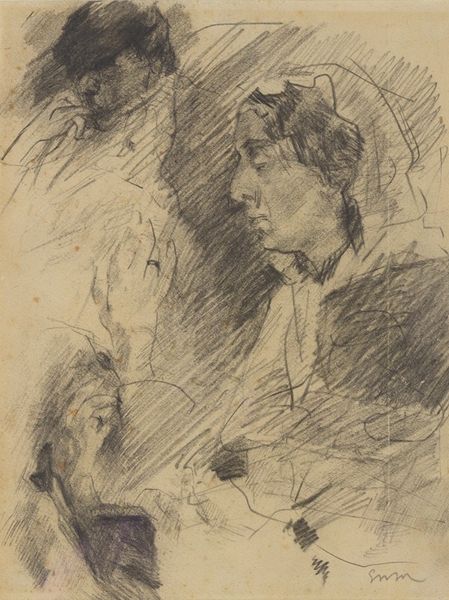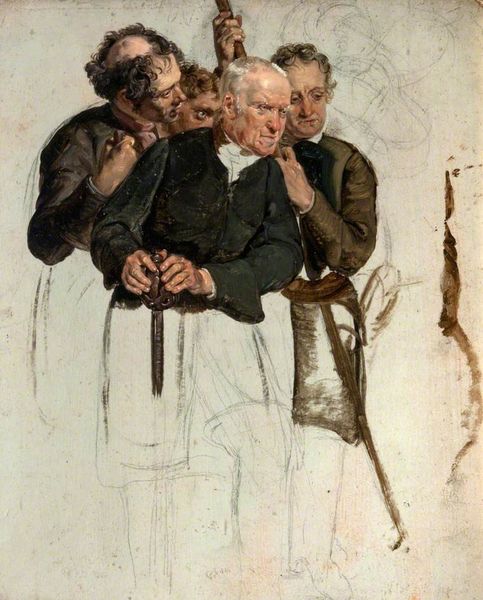
painting, oil-paint
#
portrait
#
painting
#
oil-paint
#
oil painting
#
group-portraits
#
romanticism
#
genre-painting
Copyright: Public domain
Curator: Ah, this piece, "Grim Resisters," painted around 1830 by George Harvey. What catches your eye about it? Editor: The unfinished quality, definitely. It feels so raw, so vulnerable. Like we're peeking into a moment of uncertain resolve. Their expressions—intense, but… weary? It’s almost melancholic. Curator: It is rather fascinating how Harvey leaves so much to suggestion. I'm immediately drawn to the socio-political context surrounding these portraits. Given the title, "Grim Resisters," and the period, it's almost impossible not to read them as a testament to revolutionary resistance, perhaps some underrecognized act of defiance against injustice. Editor: Possibly! Though to me, it feels…smaller, somehow. More personal. I’m wondering, what are they resisting? Maybe inner demons, or perhaps a loved one's betrayal. Could even just be against the daily grind! There is such beauty in the ordinary man. It could even represent…art itself! Curator: That’s an interesting perspective! Still, even a focus on "inner demons" could be a reaction to societal pressures, right? These are not neutral faces. I think there’s anger, frustration—a real awareness of struggle—etched in their features. It reminds us that resistance often isn’t glamorous. Editor: And you're likely right. Yet look how close they are together. Almost like family. There’s a solidarity here. A reliance on one another. The figures in the back lack color compared to the figure to our right. Curator: I appreciate that point. This makes me consider broader conversations about community versus the individual—and how acts of resistance depend so often on cooperation. What do we owe one another when the powers that be are rigged? And what sacrifices are ordinary people ready to endure? Editor: It really gets under my skin. It's just that their resilience moves me beyond historical analysis into a sense of shared human experience across the ages. It resonates now! Curator: Yes, art, at its best, serves as a bridge between worlds. What appears as historical documentation may just as well speak to our own moment in time. Editor: Leaving us to wonder—where is our own fight?
Comments
No comments
Be the first to comment and join the conversation on the ultimate creative platform.
